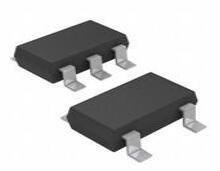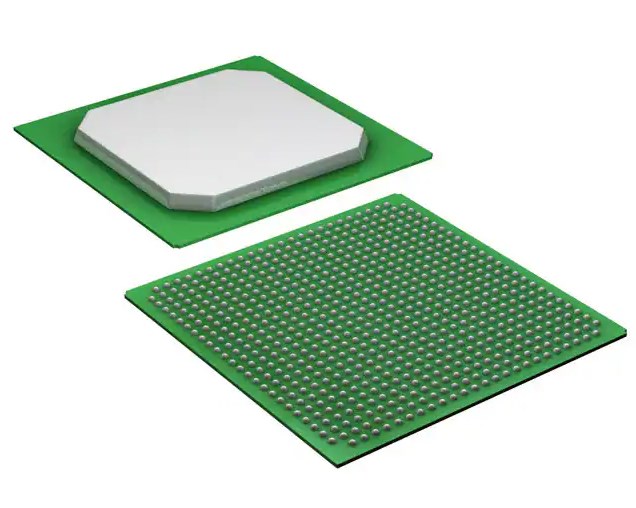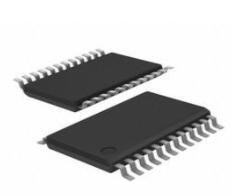Unveiling the SANYO LC87F5R96B 8-Bit Microcontroller: An In-depth Exploration
98KB 98K x 8 FLASH 8-Bit Microcontroller 64 Pin 12MHz 64-BQFP
This technical article provides an extensive exploration of the SANYO LC87F5R96B 8-bit microcontroller, shedding light on its features, memory organization, connectivity options, timers, counters, communication interfaces, ADC, PWM, clock management, interrupts, and more. By dissecting the intricacies of this high-performance microcontroller, engineers and developers can gain a comprehensive understanding of its capabilities and applicability in various embedded system designs.
Product Introduction
1. Description
The SANYO LC87F5R96B is a high-performance 8-bit microcontroller featuring a myriad of hardware components integrated into a single chip, including flash ROM, RAM, on-chip debugging, sophisticated timers and counters, PWM channels, ADC, UART ports, SIO interfaces, clock management features, and a versatile interrupt architecture. With its comprehensive feature set and robust architecture, this microcontroller serves as a compelling solution for a wide range of embedded system designs.
2. Features
The key features of the SANYO LC87F5R96B microcontroller include:
- Flash ROM capable of onboard programming with a wide range of voltage sources, block-erasable in 128-byte units, offering 100352 × 8 bits of addressable memory.
- 4096 × 9 bits of RAM, providing ample data storage for embedded applications.
- Minimum bus cycle time ranging from 83.3ns to 500ns, dependent on the operating frequency and voltage source, offering versatile performance options.
- Multiple I/O ports, dedicated oscillator ports, reset pins, power pins, and high-speed clock counter for robust connectivity and time measurement capabilities.
- Versatile timer and counter configurations including 16-bit timers/counters, 8-bit timers, base timer for time-of-day clock, and a base timer with selectable clock sources.
- Synchronous and asynchronous serial interfaces, UART ports, and a multichannel ADC for efficient data acquisition and communication.
- Multifrequency 12-bit PWM channels for precise analog signal generation and control.
This in-depth exploration provides a comprehensive understanding of the key features and capabilities of the SANYO LC87F5R96B 8-bit microcontroller, offering valuable insights into its applicability and potential use cases in embedded system designs. By dissecting the intricate technical details, engineers and developers can gain an enhanced understanding of this powerful microcontroller and its potential deployment scenarios.
Specifications
- TypeParameter
- Factory Lead Time7 Weeks
- Mounting Type
The "Mounting Type" in electronic components refers to the method used to attach or connect a component to a circuit board or other substrate, such as through-hole, surface-mount, or panel mount.
Surface Mount - Package / Case
refers to the protective housing that encases an electronic component, providing mechanical support, electrical connections, and thermal management.
64-BQFP - Number of Pins64
- Data ConvertersA/D 11x8b
- Number of I/Os50
- Operating Temperature
The operating temperature is the range of ambient temperature within which a power supply, or any other electrical equipment, operate in. This ranges from a minimum operating temperature, to a peak or maximum operating temperature, outside which, the power supply may fail.
-40°C~85°C TA - Packaging
Semiconductor package is a carrier / shell used to contain and cover one or more semiconductor components or integrated circuits. The material of the shell can be metal, plastic, glass or ceramic.
Tray - Published2013
- Pbfree Code
The "Pbfree Code" parameter in electronic components refers to the code or marking used to indicate that the component is lead-free. Lead (Pb) is a toxic substance that has been widely used in electronic components for many years, but due to environmental concerns, there has been a shift towards lead-free alternatives. The Pbfree Code helps manufacturers and users easily identify components that do not contain lead, ensuring compliance with regulations and promoting environmentally friendly practices. It is important to pay attention to the Pbfree Code when selecting electronic components to ensure they meet the necessary requirements for lead-free applications.
yes - Part Status
Parts can have many statuses as they progress through the configuration, analysis, review, and approval stages.
Active - Moisture Sensitivity Level (MSL)
Moisture Sensitivity Level (MSL) is a standardized rating that indicates the susceptibility of electronic components, particularly semiconductors, to moisture-induced damage during storage and the soldering process, defining the allowable exposure time to ambient conditions before they require special handling or baking to prevent failures
3 (168 Hours) - Frequency
In electronic components, the parameter "Frequency" refers to the rate at which a signal oscillates or cycles within a given period of time. It is typically measured in Hertz (Hz) and represents how many times a signal completes a full cycle in one second. Frequency is a crucial aspect in electronic components as it determines the behavior and performance of various devices such as oscillators, filters, and communication systems. Understanding the frequency characteristics of components is essential for designing and analyzing electronic circuits to ensure proper functionality and compatibility with other components in a system.
12MHz - Pin Count
a count of all of the component leads (or pins)
64 - Interface
In electronic components, the term "Interface" refers to the point at which two different systems, devices, or components connect and interact with each other. It can involve physical connections such as ports, connectors, or cables, as well as communication protocols and standards that facilitate the exchange of data or signals between the connected entities. The interface serves as a bridge that enables seamless communication and interoperability between different parts of a system or between different systems altogether. Designing a reliable and efficient interface is crucial in ensuring proper functionality and performance of electronic components and systems.
UART, USART - Memory Size
The memory capacity is the amount of data a device can store at any given time in its memory.
98kB - Oscillator Type
Wien Bridge Oscillator; RC Phase Shift Oscillator; Hartley Oscillator; Voltage Controlled Oscillator; Colpitts Oscillator; Clapp Oscillators; Crystal Oscillators; Armstrong Oscillator.
Internal - RAM Size
RAM size refers to the amount of random access memory (RAM) available in an electronic component, such as a computer or smartphone. RAM is a type of volatile memory that stores data and instructions that are actively being used by the device's processor. The RAM size is typically measured in gigabytes (GB) and determines how much data the device can store and access quickly for processing. A larger RAM size allows for smoother multitasking, faster loading times, and better overall performance of the electronic component. It is an important factor to consider when choosing a device, especially for tasks that require a lot of memory, such as gaming, video editing, or running multiple applications simultaneously.
4K x 8 - Voltage - Supply (Vcc/Vdd)
Voltage - Supply (Vcc/Vdd) is a key parameter in electronic components that specifies the voltage level required for the proper operation of the device. It represents the power supply voltage that needs to be provided to the component for it to function correctly. This parameter is crucial as supplying the component with the correct voltage ensures that it operates within its specified limits and performance characteristics. It is typically expressed in volts (V) and is an essential consideration when designing and using electronic circuits to prevent damage and ensure reliable operation.
2.2V~5.5V - Peripherals
In the context of electronic components, "Peripherals" refer to devices or components that are connected to a main system or device to enhance its functionality or provide additional features. These peripherals can include input devices such as keyboards, mice, and touchscreens, as well as output devices like monitors, printers, and speakers. Other examples of peripherals include external storage devices, network adapters, and cameras. Essentially, peripherals are external devices that expand the capabilities of a main electronic system or device.
PWM, WDT - Program Memory Type
Program memory typically refers to flash memory when it is used to hold the program (instructions). Program memory may also refer to a hard drive or solid state drive (SSD). Contrast with data memory.
FLASH - Core Size
Core size in electronic components refers to the physical dimensions of the core material used in devices such as inductors and transformers. The core size directly impacts the performance characteristics of the component, including its inductance, saturation current, and frequency response. A larger core size typically allows for higher power handling capabilities and lower core losses, while a smaller core size may result in a more compact design but with limitations on power handling and efficiency. Designers must carefully select the core size based on the specific requirements of the application to achieve optimal performance and efficiency.
8-Bit - Program Memory Size
Program Memory Size refers to the amount of memory available in an electronic component, such as a microcontroller or microprocessor, that is used to store program instructions. This memory is non-volatile, meaning that the data stored in it is retained even when the power is turned off. The program memory size determines the maximum amount of code that can be stored and executed by the electronic component. It is an important parameter to consider when selecting a component for a specific application, as insufficient program memory size may limit the functionality or performance of the device.
98KB 98K x 8 - Connectivity
In electronic components, "Connectivity" refers to the ability of a component to establish and maintain connections with other components or devices within a circuit. It is a crucial parameter that determines how easily signals can be transmitted between different parts of a circuit. Connectivity can be influenced by factors such as the number of input and output ports, the type of connectors used, and the overall design of the component. Components with good connectivity are essential for ensuring reliable and efficient operation of electronic systems.
SIO, UART/USART - RoHS Status
RoHS means “Restriction of Certain Hazardous Substances” in the “Hazardous Substances Directive” in electrical and electronic equipment.
ROHS3 Compliant - Lead Free
Lead Free is a term used to describe electronic components that do not contain lead as part of their composition. Lead is a toxic material that can have harmful effects on human health and the environment, so the electronics industry has been moving towards lead-free components to reduce these risks. Lead-free components are typically made using alternative materials such as silver, copper, and tin. Manufacturers must comply with regulations such as the Restriction of Hazardous Substances (RoHS) directive to ensure that their products are lead-free and environmentally friendly.
Lead Free
Parts with Similar Specs
- ImagePart NumberManufacturerPackage / CaseNumber of PinsNumber of I/OInterfaceMemory SizePeripheralsMoisture Sensitivity Level (MSL)Program Memory TypeView Compare
LC87F5R96BU-QIP-E
64-BQFP
64
50
UART, USART
98 kB
PWM, WDT
3 (168 Hours)
FLASH
64-TQFP
64
50
I2C, IrDA, SPI, UART, USART, USB
64 kB
Brown-out Detect/Reset, DMA, POR, PWM, WDT
3 (168 Hours)
FLASH
64-LQFP
64
50
I2C, SPI, USART
128 kB
Brown-out Detect/Reset, DMA, I2S, POR, PWM, WDT
3 (168 Hours)
FLASH
64-TQFP
64
50
I2C, IrDA, SPI, UART, USART
64 kB
Brown-out Detect/Reset, POR, PWM, WDT
3 (168 Hours)
FLASH
64-TQFP
64
50
I2C, SPI, UART, USART
96 kB
Brown-out Detect/Reset, POR, PWM, WDT
3 (168 Hours)
FLASH
Datasheet PDF
- Environmental Information :
- RohsStatement :
- Datasheets :
 STM32F070CBT6 ARM Microcontroller: Pinout, Datasheet, Features and Applications
STM32F070CBT6 ARM Microcontroller: Pinout, Datasheet, Features and Applications06 January 20221710
 A1266 3D Hall-Effect Switch: Datasheet, Equivalent and Pinout
A1266 3D Hall-Effect Switch: Datasheet, Equivalent and Pinout20 October 20211915
 Stellaris® LM3S315 Microcontroller: Technical Overview
Stellaris® LM3S315 Microcontroller: Technical Overview29 February 2024128
 A Comprehensive Guide to Texas Instruments MSP430F Series Mixed Signal Microcontrollers
A Comprehensive Guide to Texas Instruments MSP430F Series Mixed Signal Microcontrollers29 February 2024163
 STM32H723VGT6 Datasheet Guide: How to Find & Interpret Technical Documentation
STM32H723VGT6 Datasheet Guide: How to Find & Interpret Technical Documentation05 July 2025749
 bs250p MOSFET: Datasheet, Equivalent, Pinout, and Specifications
bs250p MOSFET: Datasheet, Equivalent, Pinout, and Specifications31 March 20223892
 EP2C35F672I8N FPGA: Features, Specifications and Pins
EP2C35F672I8N FPGA: Features, Specifications and Pins17 April 2025891
 UCC28951-Q1 Controller: Pinout, Datasheet and Application Circuit
UCC28951-Q1 Controller: Pinout, Datasheet and Application Circuit29 March 20221322
 Designing a GaN-based Dual Active Bridge for PHEV Chargers
Designing a GaN-based Dual Active Bridge for PHEV Chargers17 May 20242276
 An Analysis of Current-Source Inverters Using High-Frequency WBG Switches
An Analysis of Current-Source Inverters Using High-Frequency WBG Switches09 May 20232960
 Comprehensive Introduction to Snapdragon 888
Comprehensive Introduction to Snapdragon 88828 June 202110669
 Global Ceramic Capacitors Market In-Depth Analysis to 2024
Global Ceramic Capacitors Market In-Depth Analysis to 202424 November 20234235
 Comparative Analysis of Si and SiC Devices for EV Traction Inverters
Comparative Analysis of Si and SiC Devices for EV Traction Inverters10 March 20233169
 What is Graphics Processing Unit (GPU)?
What is Graphics Processing Unit (GPU)?18 October 20215831
 Exploring the Strengths and Hurdles of Wide Bandgap Devices in Alternating Current Electric Drives
Exploring the Strengths and Hurdles of Wide Bandgap Devices in Alternating Current Electric Drives19 January 20241983
 Clamp Diodes: Principles, Functions, and Applications
Clamp Diodes: Principles, Functions, and Applications27 October 202048074
ON Semiconductor
In Stock
United States
China
Canada
Japan
Russia
Germany
United Kingdom
Singapore
Italy
Hong Kong(China)
Taiwan(China)
France
Korea
Mexico
Netherlands
Malaysia
Austria
Spain
Switzerland
Poland
Thailand
Vietnam
India
United Arab Emirates
Afghanistan
Åland Islands
Albania
Algeria
American Samoa
Andorra
Angola
Anguilla
Antigua & Barbuda
Argentina
Armenia
Aruba
Australia
Azerbaijan
Bahamas
Bahrain
Bangladesh
Barbados
Belarus
Belgium
Belize
Benin
Bermuda
Bhutan
Bolivia
Bonaire, Sint Eustatius and Saba
Bosnia & Herzegovina
Botswana
Brazil
British Indian Ocean Territory
British Virgin Islands
Brunei
Bulgaria
Burkina Faso
Burundi
Cabo Verde
Cambodia
Cameroon
Cayman Islands
Central African Republic
Chad
Chile
Christmas Island
Cocos (Keeling) Islands
Colombia
Comoros
Congo
Congo (DRC)
Cook Islands
Costa Rica
Côte d’Ivoire
Croatia
Cuba
Curaçao
Cyprus
Czechia
Denmark
Djibouti
Dominica
Dominican Republic
Ecuador
Egypt
El Salvador
Equatorial Guinea
Eritrea
Estonia
Eswatini
Ethiopia
Falkland Islands
Faroe Islands
Fiji
Finland
French Guiana
French Polynesia
Gabon
Gambia
Georgia
Ghana
Gibraltar
Greece
Greenland
Grenada
Guadeloupe
Guam
Guatemala
Guernsey
Guinea
Guinea-Bissau
Guyana
Haiti
Honduras
Hungary
Iceland
Indonesia
Iran
Iraq
Ireland
Isle of Man
Israel
Jamaica
Jersey
Jordan
Kazakhstan
Kenya
Kiribati
Kosovo
Kuwait
Kyrgyzstan
Laos
Latvia
Lebanon
Lesotho
Liberia
Libya
Liechtenstein
Lithuania
Luxembourg
Macao(China)
Madagascar
Malawi
Maldives
Mali
Malta
Marshall Islands
Martinique
Mauritania
Mauritius
Mayotte
Micronesia
Moldova
Monaco
Mongolia
Montenegro
Montserrat
Morocco
Mozambique
Myanmar
Namibia
Nauru
Nepal
New Caledonia
New Zealand
Nicaragua
Niger
Nigeria
Niue
Norfolk Island
North Korea
North Macedonia
Northern Mariana Islands
Norway
Oman
Pakistan
Palau
Palestinian Authority
Panama
Papua New Guinea
Paraguay
Peru
Philippines
Pitcairn Islands
Portugal
Puerto Rico
Qatar
Réunion
Romania
Rwanda
Samoa
San Marino
São Tomé & Príncipe
Saudi Arabia
Senegal
Serbia
Seychelles
Sierra Leone
Sint Maarten
Slovakia
Slovenia
Solomon Islands
Somalia
South Africa
South Sudan
Sri Lanka
St Helena, Ascension, Tristan da Cunha
St. Barthélemy
St. Kitts & Nevis
St. Lucia
St. Martin
St. Pierre & Miquelon
St. Vincent & Grenadines
Sudan
Suriname
Svalbard & Jan Mayen
Sweden
Syria
Tajikistan
Tanzania
Timor-Leste
Togo
Tokelau
Tonga
Trinidad & Tobago
Tunisia
Turkey
Turkmenistan
Turks & Caicos Islands
Tuvalu
U.S. Outlying Islands
U.S. Virgin Islands
Uganda
Ukraine
Uruguay
Uzbekistan
Vanuatu
Vatican City
Venezuela
Wallis & Futuna
Yemen
Zambia
Zimbabwe














